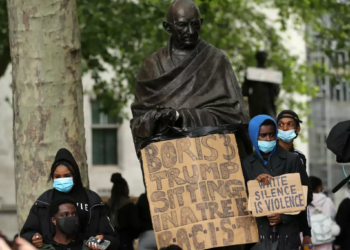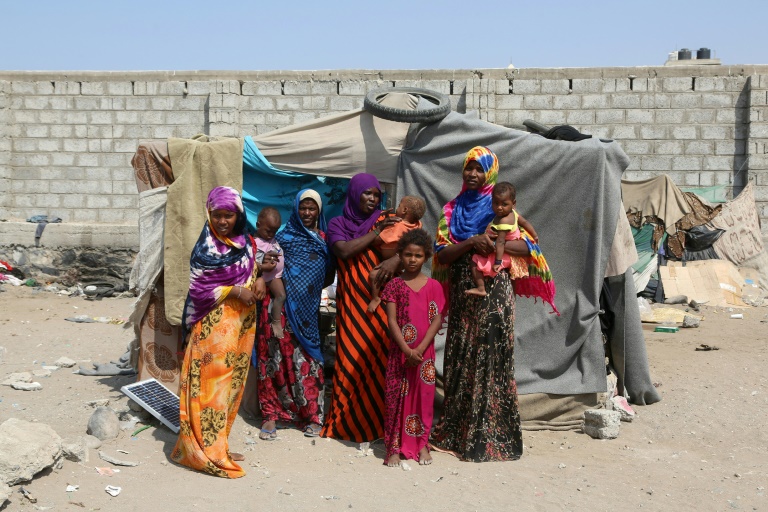Like in many other countries, there has been a marked proliferation of spurious websites and social media handles in India. Rumors peddled online often seem to augment and advance the majoritarian Hindutva discourse – an ideology that seeks to define Indian culture in terms of Hindu values – thereby widening the already existing communal polarization.
No less, online rumors have been responsible for law and order breakdowns, and, at times, triggered the false alarm of natural calamities, leading to crowd frenzy.
The mainstream media has not done much to eliminate false news. On the contrary, it has been caught on several occasions giving greater circulation to online myths. This is dangerous in a country with 355 million internet users, but where the fact-checking industry is only beginning to exist.
Pankaj Jain, the founder of fact-checking website SM Hoax Slayer, one of the few independent fact-checking organizations in India, said the problems caused by fake news has assumed frightening proportion. He pointed out that hoaxes circulated on WhatsApp have in a few instances led to mob violence.
“A mob lynched six people in Singhbhum district of Jharkhand state in May 2017, believing them to be child abductors, following a rumor on WhatsApp,” Mr. Jain said.
There are nearly 200 million Whatsapp users in India. Shammas Oliyath, who is the brain behind Check4Spam, a fact-checking website, pointed out that since Whatsapp is used by even semi-literate persons in the country, it has emerged as the most dangerous and speedy vehicle for rumor-mongering.
“A Facebook user or a Twitter user has to be tech-savvy to some extent and such a user would also have access to other news websites since he has a social media account and is more actively accessing the Internet. But when it comes to WhatsApp in India, it is being also used by users who barely have any education and who lack the intellectual faculty to distinguish truth from gossip. Our team finds it very difficult to persuade such people that a certain news item is a hoax,” he told The Globe Post.
In September 2017, residents of Mumbai, India’s financial capital, ran for safety to disaster management control rooms after news went viral on WhatsApp that the Brihanmumbai Municipal Corporation (BMC) has issued warning of heavy rainfall and a cyclone. In November 2016, the government had a tough time dealing with rumours that the new currency denomination of Rs 2,000 are embedded with nano-chips that would track the location of the currency holder.
But many people believe fake news in India is not only about mischief. It is being systematically used to stifle dissent. Fact checkers claim that those who question the government of Prime Minister Narendra Modi have often become the target of online smear campaign, with the mainstream media joining the charade.
In May 2017, several news channels aired stories against renowned novelist Arundhati Roy, accusing her of making disparaging remarks against the Indian Army. The channels claimed that Ms. Roy, a staunch critic of the prime minister, had said that India would not get full control of Kashmir, even if its Army deployment was increased from current 700,000 to seven million in the disputed valley, which both India and Pakistan claim entirely.
Ms. Roy became the punching bag of all in no time, with trolls slamming the Man Booker Prize winner as anti-national. A celebrity anchor denounced her as a “one book whiner wonder,” while a Bharatiya Janata Party (BJP) lawmaker suggested that the Army should tie Ms. Roy to a jeep and parade her. It later turned out that Ms. Roy had not made the comments attributed to her. News channels had sourced the story from a Pakistani nationalist website of little credibility.
In 2016, several news channels ran doctored videos of a speech made by Jawaharlal Nehru University (JNU) student Kanhaiya Kumar, who was later arrested on charges of sedition.
Mr. Kumar was shown raising the slogan “azadi,” a catch-phrase used by Kashmiris who demand independence from Indian rule. By the time it was established that Mr. Kumar had actually called for freedom from social injustices such as hunger, economic inequality, the caste hierarchy and the growing communal divide, the damage had been done.
Many political commentators pointed out at the time that the larger design was to discredit the Jawaharlal Nehru University as an institution. JNU is known for the unwavering resistance it has offered over the decades to the right wing in the country.
Muslims Are Easy Preys
Prateek Sinha, founder of Alt News, a news verification website, said one of the primary agendas of the fake news mills is to show the minorities in poor light.
“The country is heading towards a majoritarian politics and around the time of each election in the past two-three years, there has been a concerted effort to incite anger against the minorities,” Mr. Sinha told The Globe Post. “Most of the prime time news is either on India-Pakistan border tension or on some random Muslim cleric making some stupid statement. This is purely being done to increase the polarization.”
In July 2017, a leading English news channel “broke” a prime-time story on how Muslim clerics in India’s southern state of Kerala are offering cash incentives for converting Hindu girls into Islam. The anchor claimed that their investigation has found that these clerics are affiliated to the Islamic State, which has a “base in India.”
However, independent fact-checking website, Alt News, debunked the story. It pointed out that the report was based on a doctored image that was first floated on WhatsApp in 2010.
Usually, fake stories fanning communal tension become more frequent during elections. Ahead of the Gujarat state election in December 2017, multiple reports appeared in well-read Hindi and English dailies that the release from house arrest of Hafiz Saeed, the chief of Lashkar-e-Taiba, an Islamic militant organization that operates mainly from Pakistan, was celebrated in some localities at Lakhimpur Khiri town in Uttar Pradesh, a state with a sizeable Muslim population.
The largest selling English newspaper of India even carried statements of some right-wing groups which claimed they have a video to corroborate that the youths belonging to the minority community had raised the Pakistani flag. However, when Alt News contacted the Superintendent of Police in Lakhimpur, S. Channappa, he dismissed the allegations as unfounded and false.
The day after the Lakhimpur incident, four widely-read Hindi dailies reported that Pakistan zindabad (long live Pakistan) slogans were raised at an AIMIM rally in Ghaziabad town of Uttar Pradesh. AIMIM is a political party headed by controversial Muslim leader Asaduddin Owaisi. This too turned out to be untrue.
Mr. Oliyath said that based on cases they have investigated, 80 percent of fake news circulated at the time of elections favor one particular party. Although he did not name the BJP, he said online hoaxes tend to promote Hindu nationalist agendas. He said that it is only in the past one year that other political parties have increased their social media presence and have put up a strong defense online.
Many commentators lament that the Indian media has become a mouthpiece of the Central government. Some attribute it to the growing interference coming from the corporates that allegedly finance many media houses. Recently, the records maintained by the Ministry of Corporate Affairs’s registrar of companies revealed that five big media companies in India — NDTV, News Nation, News 24, India TV and Network 18 — have taken loans from either Reliance Industries owner Mukesh Ambani or Mahendra Nahata, who is an industrialist and business associate of Mr. Ambani.
Mr. Jain said that news channels often indulge in propaganda to give currency to the BJP’s stated position on important public discourses. He pointed out that the news channels hound the opposition, but the government is seldom questioned.
“Last year in June, several news channels aired a photograph of Congress president Rahul Gandhi sharing dais with a few Chinese officials. Although they said that the photograph was unverified and undated, they ran provoking hashtags that gave a false impression that the opposition leader was caught on camera during a clandestine meeting with the Chinese. The photograph, it later turned out, was taken during a Chinese food festival in New Delhi which was also attended by other leaders,” Mr. Jain said.
Needed Change
Independent evaluators have been harsh in their assessment of the standard of Indian journalism. Reporters Without Borders, an NGO, ranked India 136th among 180 countries in its world press freedom index compiled in April 2017.
On several occasions, the government itself has been caught using misleading photographs to lend credence to its claims of development. In April 2017, the Home Ministry’s annual report, tabled during the Budget session of Parliament, used photographs of the Spain-Morocco border to showcase floodlights installed by the Indian government at the India-Pakistan border. The ministry had to order an enquiry after Alt News exposed the goof up.
Later in November, the Ministry for Roads, Transport and Highways uploaded a picture of Gardiner Expressway in Toronto, to advertise the ‘good work’ done by it.
Fact-checkers claim that money, not merely ideological mooring, triggers fake news. Mr. Sinha claimed that people running dubious websites have understood that writing about Prime Minister Modi or Uttar Pradesh’s hardliner Chief Minister Yogi Adityanath or the India Army would get them more clicks and consequently more Google ads.
Fact checkers in India recommend stricter laws to regulate online content. They want the media to become more accountable.
“The regulatory bodies in India do not have teeth. Although we don’t want them to be so strong that they can stop a journalist from doing his work, they should be in a position to impose penalty if some news turns out to be false, malicious propaganda. Currently, they can only ask a media outlet to tender an apology for a false reportage but we have seen some news channels refusing to do so,” Mr. Sinha said.
Mr. Jain pointed out that the Government does not have clear laws to curb false propaganda online. “The government needs to bring the online space under the ambit of the law,” he said.
But Mr. Oliyath is sceptical that the government would act. “Most of the fake propaganda seems to benefit the ruling party. Why would the government bother?” he asked.























